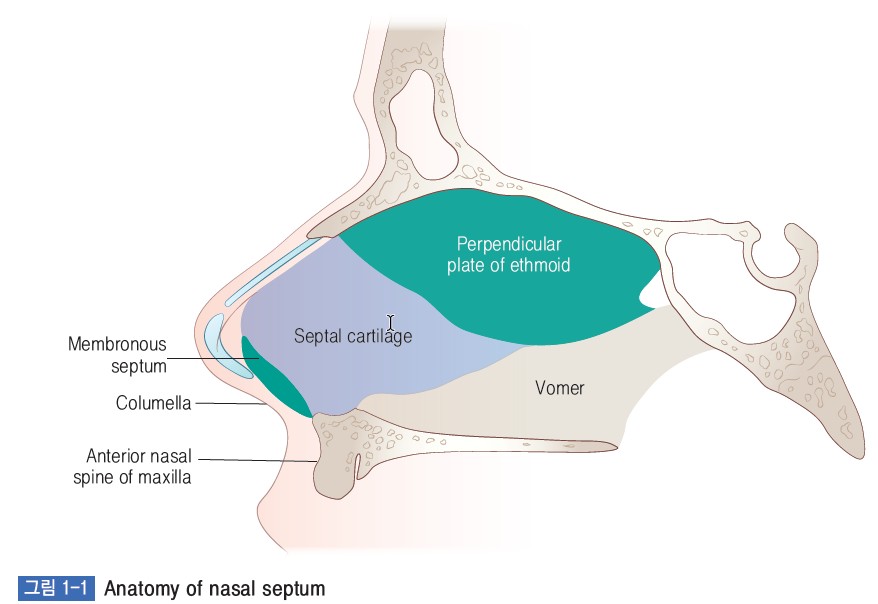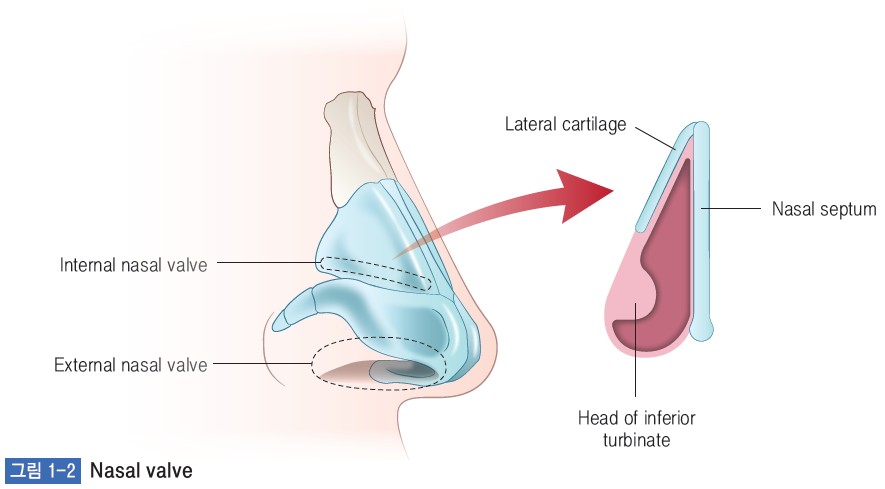Functional rhinoplasty is a surgical procedure that simultaneously performs cosmetic rhinoplasty and surgery to maintain or restore the basic functions of the nose without damage. The most important functional structure of the nose in functional rhinoplasty is the nasal septum.
In functional rhinoplasty, the nasal septum is an important cartilage material for rhinoplasty, and if the nasal septum is crooked or cannot withstand the tension of implants such as septal extension graft or silicone implants and bends downward, it will result in not only functional problems but also unsatisfactory results in terms of aesthetics. The nasal septum must be firmly supported in any functional rhinoplasty situation.
Therefore, septal correction surgery is the first procedure that must be learned in functional rhinoplasty. It is essential to acquire excellent septoplasty skill to the extent that septoplasty alone can improve the patient’s nasal obstruction. In this chapter, we will explain the causes of septal deviation, methods for correcting it, and the concept of the nasal valve.
1. Anatomical Structure and Meaning of the Nasal Septum
The nasal septum is formed by cartilage and bone plates and is firmly connected. In addition, the membranous septum is located between the caudal end of the nasal septum and the columella, and is composed only of the skin layer of the nasal vestibule and the subcutaneous fat layer without any skeletal structure such as cartilage. This membranous septum is highly mobile, so the columella is not fixed to the anterior nasal septum and can easily slide left and right or forward and backward (Figure 1-1).
In the septal extension graft method, which is commonly performed in nasal tip plasty, the membranous nasal septum is lost, so the mobility of the columella is reduced. In contrast, columellar strut graft without fixing the graft to the nasal septum has the advantage of maintaining the membranous nasal septum. However, compared to the septal extension graft, it may be difficult to adjust the angle and height of the tip of the nose with only the floating type columellar strut.

2. Causes of Septal Deviation
The causes of septal deviation are known to be birth defects, external damages, and compensational defects. However, regardless of the cause, the inner cartilagionous and bony structure are affected by tension within a certain skin compartment and becomes bent. This will be discussed in detail in the section titled [5. Correction of L-strut.]
3. Definition of the nasal valve
The nasal valve is divided into the internal nasal valve and the external nasal valve. The internal nasal valve is generally the object of interest in functional rhinoplasty for Asians. The internal nasal valve refers to the area formed by the caudal septum, pyriform aperture, anterior portion of inferior turbinate, and caudal border of upper lateral cartilage. However, rather than meaning a precise boundary, it is desirable to understand this structure as a functional complex spanning several millimeters that forms the boundary (Figure 1-2).

The nasal valve acts as a resistor that restricts airflow and also acts as a turbulizer that spray the airflow into nasal cavity. In other words, it changes the airflow that started as a laminar flow into a turbulent flow, allowing a wider range of mucous membranes and air to come into contact with the nasal cavity, thereby performing functions such as filtration, humidification, heat retention, and olfaction. However, if the nasal valve becomes too narrow due to a deviated anterior septum, the pressure difference before and after the nasal valve becomes severe, causing negative pressure, which causes the nasal valve to become narrow, resulting in severe nasal congestion. In such cases, surgical treatment is recommended.


